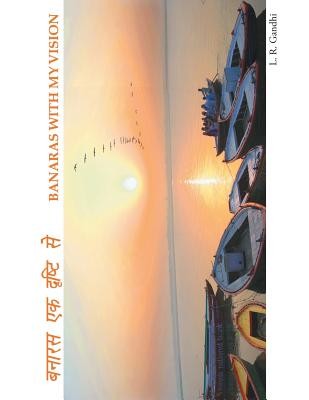
- We will send in 10–14 business days.
- Author: L R Gandhi
- Publisher: Partridge India
- Year: 2016
- Pages: 62
- ISBN-10: 1482874717
- ISBN-13: 9781482874716
- Format: 21.6 x 27.9 x 0.4 cm, softcover
- Language: English
- SAVE -10% with code: EXTRA
Reviews
Description
Banaras grew as an important industrial centre, famous for its muslin and silk fabrics, perfumes, ivory works, and sculpture. Buddha is believed to have founded Buddhism here around 528 BC when he gave his first sermon, "The Setting in Motion of the Wheel of Dharma," at nearby Sarnath. The city's religious importance continued to grow in the eighth century when Adi Shankara established the worship of Shiva as an official sect of Banaras. Despite the Muslim rule, Banaras remained the centre of activity for Hindu intellectuals and theologians during the Middle Ages, which further contributed to its reputation as the cultural centre of religion and education. Goswami Tulsidas wrote his epic poem on Lord Rama's life called "Ram Charit Mansas" in Banaras. Several other major figures of the Bhakti movement were born in Banaras, including Kabir and Ravidas. Guru Nanak Dev visited Banaras for Shivratri in 1507, a trip that played a large role in the founding of Sikhism. In the sixteenth century, Banaras experienced a cultural revival under the Muslim Munghai emperor Akbar, who invested in the city and built two large temples dedicated to Shiva and Vishnu. Much of modern Banaras was built during the eighteenth century by the Maratha and Bhumihar kings. The kingdom of Banaras was given official status by the Mughals in 1737 and continued as a dynasty-governed area until Indian independence in 1947.
EXTRA 10 % discount with code: EXTRA
The promotion ends in 18d.20:59:16
The discount code is valid when purchasing from 10 €. Discounts do not stack.
- Author: L R Gandhi
- Publisher: Partridge India
- Year: 2016
- Pages: 62
- ISBN-10: 1482874717
- ISBN-13: 9781482874716
- Format: 21.6 x 27.9 x 0.4 cm, softcover
- Language: English English
Banaras grew as an important industrial centre, famous for its muslin and silk fabrics, perfumes, ivory works, and sculpture. Buddha is believed to have founded Buddhism here around 528 BC when he gave his first sermon, "The Setting in Motion of the Wheel of Dharma," at nearby Sarnath. The city's religious importance continued to grow in the eighth century when Adi Shankara established the worship of Shiva as an official sect of Banaras. Despite the Muslim rule, Banaras remained the centre of activity for Hindu intellectuals and theologians during the Middle Ages, which further contributed to its reputation as the cultural centre of religion and education. Goswami Tulsidas wrote his epic poem on Lord Rama's life called "Ram Charit Mansas" in Banaras. Several other major figures of the Bhakti movement were born in Banaras, including Kabir and Ravidas. Guru Nanak Dev visited Banaras for Shivratri in 1507, a trip that played a large role in the founding of Sikhism. In the sixteenth century, Banaras experienced a cultural revival under the Muslim Munghai emperor Akbar, who invested in the city and built two large temples dedicated to Shiva and Vishnu. Much of modern Banaras was built during the eighteenth century by the Maratha and Bhumihar kings. The kingdom of Banaras was given official status by the Mughals in 1737 and continued as a dynasty-governed area until Indian independence in 1947.


Reviews